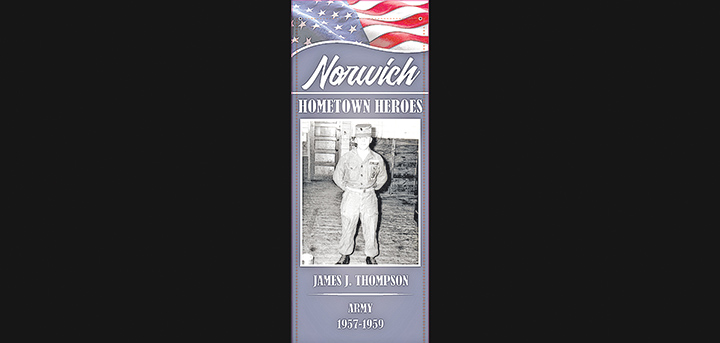Tilting At Windmills: I Like Tomaaatoes!!!
Published:
July 28th, 2023
By:
Shelly Reuben

Before my neighbor went away on vacation, she marched me across the street to her garden and pointed out two vines displaying a plethora of small balls the size of cherry tomatoes (which is what they were) nestled among the leaves like perky green ornaments on a Christmas tree.
She said, “They should be ripening in a day or two, so feel free to pick as many as you like when I’m gone.”
That got me to thinking about tomatoes in general and how, when we are eating, not-eating, or just thinking about them, they occupy so much territory in the landscape of our vocabularies.
Take, for example, that delightful Ira and George Gershwin song, “Let’s Call the Whole Thing Off,” which includes these lyrics:
“You like potato and I like potato
“You like tomato and I like (pronounced the British way) tomaaato...”
Or, if we go back 30 or 40 years, a man dazzled by the sight of a voluptuous woman might refer to her as “A real tomato!” – A phrase that others might find offensive, but for me just conjures up images of lush and healthy things.
Less endearing, we have “rotten tomatoes,” a phrase which suggests entities that are detestable or repulsive ... a little like rotten apples, but somehow messier and more disgusting.
There is a website called “Rotten Tomatoes” whose purpose is to review movies. Presumably, the website’s name was inspired by an audience’s questionable practice of throwing rotten tomatoes at stage performers to signify displeasure. However, the Rotten Tomatoes website may be a misnomer, because it gives as much space to good reviews as it does to bad.
For example, movies such as “Toy Story” (1995), “Singing in the Rain” (1952), and “The Philadelphia Story” (1940) all received 100 % ... a perfect score on the Rotten Tomatoes’ “tomatometer.”
On a more exotic note, in France, the tomato is called the “Pomme d’amour” or love apple, as it is believed to have aphrodisiac powers. Whereas in Medieval times, those fanatical tapestry weavers, infidel slayers, and wimple-wearers avoided tomatoes altogether, considering them poisonous, because they belonged to the (often deadly) nightshade family of plants.
In 1978 – bless all lunatic filmmakers – “Attack of the Killer Tomatoes” was produced, which spoofed horror movies like “The Blob,” “The Birds,” and “Jaws.” In its opening sequence, a woman is killed by a tomato that rises out her garbage disposal. When her body is found, it is discovered that instead of blood, she is covered with tomato juice.
I suspect that the movie cheerfully goes downhill from there.
It received 27% on the Rotten Tomatoes’ tomatometer.
“Harriet the Spy” is also guilty of popularizing tomatoes. In one sequence of Louise Fitzhugh’s popular children’s book, Harriet, spying on a delivery boy about to eat his lunch, comments, “When I look at him, I could eat a thousand tomato sandwiches.” Adding, “There is nothing like a good tomato sandwich now and then.”
Moving along down my mythical Tomato Hall of Fame, we also have Fanny Flagg’s “Fried Green Tomatoes,” which features pithy, quotable dialogue, and a recipe for the titled comestible that includes buttermilk, cornmeal, and flour, a combination of ingredients which only could have originated in the South. My favorite quote from that novel: “Are you a politician, or does lying just run in your family?”
A few more biographical details about Mr. Tomato and his relatives:
Botanically, a tomato is not a vegetable. It is a fruit. However, as Miles Kington so insightfully remarked, “Knowledge is knowing a tomato is a fruit; wisdom is not putting it in a fruit salad.”
Also noteworthy ... the leaves and stem of tomato plants are toxic. So do not use them as greens in your next tuna sandwich. But if Great Aunt Matilda, who is planning on leaving you a fortune in her will, refuses to die in a timely manner, you might want to add some to her next assemblage of vegetables.
What else?
Well, there are up to 300 seeds in a single tomato. But ... I know. Who cares?
Tomatoes originated in the Andes Mountains of South America, and were introduced to Europeans by Spanish conquistador Hernán Cortés, who brought the seeds back to Spain after he wreaked havoc on the Aztec city Tenochtítlan. Nowadays, however, the leading producer and exporter of tomatoes is not South America, but (bet you guessed wrong) ... China!
Here is one additional weird bit of information that I have absolutely no intention of verifying, but I would love to hear back from any valiant readers sufficiently curious to perform the experiment: YOU CAN USE THE JUICE FROM A TOMATO TO SHINE COPPER OR BRASS.
Two more fun quotes about tomatoes, and then I promise I’ll stop.
First, from Laurie Colwin: “A world without tomatoes is like a string quartet without violins.”
Second, from John Denver, “Only two things that money can’t buy. That’s true love and home grown tomatoes.”
I guess that’s it.
Today’s observations were inspired by my neighbor and the cherry tomatoes that she invited me to pick from her lush and lovely garden.
For the sake of my readers and next week’s column, we can but hope that another friendly neighbor doesn’t pop over to visit with a basketful of rhubarbs, Brussels sprouts, and turnips!
Copyright © Shelly Reuben, 2023. Shelly Reuben’s books have been nominated for Edgar, Prometheus, and Falcon awards. For more about her writing, visit www.shellyreuben.com
Author: Shelly Reuben - More From This Author
Comments








